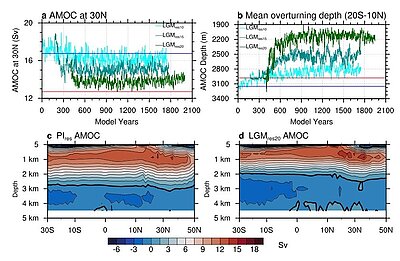Dezember 2025:
Prof. Dr. Mojib Latif erhält den Ehrenpreis des "Deutscher Nachhaltigkeitspreises"
für seine herausragende wissenschaftliche Arbeit zur Klimadynamik der Ozeane und seine einzigartige Fähigkeit, wissenschaftliche Erkenntnisse mit Glaubwürdigkeit, Klarheit und menschlicher Wärme in die Gesellschaft zu tragen.

(C) Max Planck Institute for Multidisciplinary Sciences, Göttingen
Oktober 2025:
Prof. Dr. Mojib Latif erhält die Science Communication-Medaille 2025.
Im Rahmen der Wissenschaftsreihe beim Göttinger Literaturherbst verleihen die Göttinger Max-Planck-Institute einmal jährlich die Science Communication-Medaille. Damit zeichnen sie Wissenschaftler*innen aus, die sich in besonderem Maße dafür einsetzen, aktuelle Forschungsergebnisse in die Öffentlichkeit zu tragen.
Veranstalter der Vortragsreihe „Wissenschaft beim Göttinger Literaturherbst“ sind die vier Göttinger Max-Planck-Institute, die Göttinger Literaturherbst GmbH sowie die Niedersächsische Staats- und Universitätsbibliothek.
Oktober 2025:
Neue Veröffentlichung:
Song, Z., Latif, M., Park, W. et al. Southern Ocean influence on Atlantic Meridional Overturning Circulation across climate states. Nat Commun 16, 9230 (2025). https://doi.org/10.1038/s41467-025-64268-3
Abstract:
Various proxy data agree on a shallow Atlantic Meridional Overturning Circulation (AMOC) during the last glacial maximum (LGM), extending down to 2000 m − 2500 m depth, which is similar to the AMOC geometry projected by climate models over the 21st century with rising atmospheric CO2. The AMOC strength in the two climate states is insufficiently constrained. Here the Antarctic Bottom Water (AABW) and North Atlantic Deep Water (NADW) properties from proxy data and climate models are used to investigate their influences on the AMOC. It is primarily the AABW’s potential density that determines the AMOC depth in both the LGM and warming climate. Changes in the potential density of the AABW, and the density contrast between NADW and AABW affect the pathways via which NADW returns to the surface and provide a constraint on AMOC strength. This study emphasizes the importance of the Southern Ocean in the AMOC’s depth and strength across climate states.




